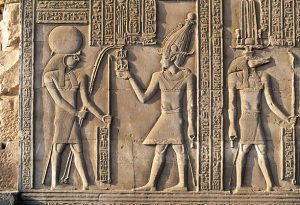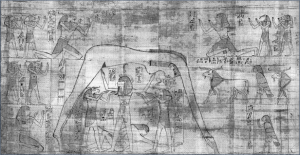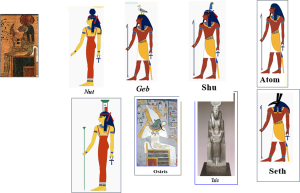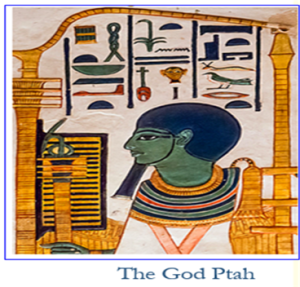Stories of Creation, Power, and the Divine

Religion in Ancient Egypt
Key Elements of Ancient Egyptian Religion • Mythology of Creation of the universe • Gods and goddesses • Religious rituals • Afterlife • Beliefs about the afterlife Egyptian thought on the creation of the universe Early Creation Myths among Ancient Egyptians Heliopolis Creation Myth: Thinkers in On (Heliopolis) believed that the universe originated from a vast, dark, primordial ocean called Nun. As the waters receded, a small, mound-like hill emerged. Upon this hill, the god Atum spontaneously created himself and subsequently the universe. This concept influenced the construction of pyramids and obelisks. Atum created Shu, the god of air, and Tefnut, the goddess of moisture. Shu and Tefnut gave birth to Geb, the god of the earth, and Nut, the goddess of the sky. Geb and Nut, in turn, had four children: Osiris, Isis, Seth, and Nephthys.



The Ashmunin Creed
Ashmunin is a city located in Minya Governorate. It was once a center of worship for the god Thoth (Djehuty), who was often depicted as a baboon or an ibis bird. Thoth was considered the god of wisdom, knowledge, and the origin of existence. This creed posits that the universe was created by Gods, four males as and four females: Nun and Nunut, Kek and Keket, Heh and Hehet, and Amun and Amunut. These gods were often portrayed as frogs and snakes, perhaps due to their ability to adapt to both land and water, and the prolific nature of frogs. The Ashmunites believed that the universe originated from either a cosmic egg or a lotus flower. In one myth, Thoth laid a cosmic egg from which the sun god Ra emerged. In another, Ra appeared from a lotus flower, taking on the form of either a scarab beetle or a small child.
The Memphis Creed
The primary God in this creed is Ptah, considered the creator of the universe through the heart and the tongue. In ancient Egyptian belief, the heart was the center of feelings, emotions, existence, thought, and desires. According to this theory, the universe was created through the heart, which then ascended to the tongue, resulting in the creation of the cosmos. It was believed that all other deities were merely manifestations of Ptah. According to this creed, Ptah rewards the good person with life and punishes the evil and unjust person with destruction and death
The Creed of Thebes(wast)
In the Thebes creed, the god Amun is considered the creator of the universe. Amun gave birth to a serpent-like child, and from this child, he created the eight gods of Hermopolis (Ashmunin). Subsequently, he created the sun god Ra. These deities were believed to reside in the necropolis of Thebes, specifically at the Temple of Karnak. The Egyptians believed that these gods were responsible for the daily rising of the sun and the creation of the Nile River, which nourished the agricultural lands.


Religious Rituals
Religious rituals were an integral part of ancient Egyptian life. No temple was complete without scenes depicting offerings to the gods. Similarly, tombs were adorned with images of funerary rituals to ensure the safe passage of souls into the afterlife. The Goddess Ma’at Ma’at represented justice and truth in ancient Egypt. She was often depicted as a woman wearing an ostrich feather on her head, which symbolized the feather of truth. In the afterlife, the Egyptians believed that the heart of the dead would be weighed against the feather of Ma’at in a judgment hall presided over by the god Osiris. If the heart was found to be as light as the feather, the individual was deemed worthy of entering the afterlife. However, if the heart was heavy with sins, it would be devoured by the monstrous creature (AmAm). Chapter 125 of the Book of the Dead contains texts declares: “I have not stolen, nor killed, nor committed adultery, nor caused harm to others. I have given food to the hungry, clothing to the naked, and shelter to the traveler. I have honored my parents and been kind to my neighbors.”






